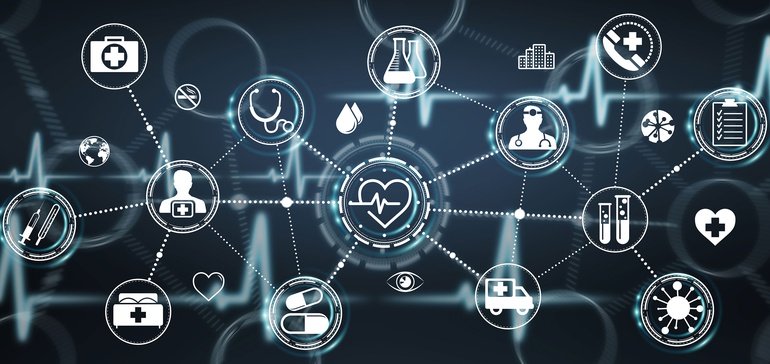
With technology companies and government agencies working together, the healthcare industry has achieved important milestones toward improving the interoperability of healthcare IT systems. For example, thanks to near-universal implementation of electronic health records (EHR) systems and widespread use of other digital applications in healthcare practices, providers today have more access to actionable patient data than they ever have.
But despite these impressive strides, there are still major operational inefficiencies in sharing and accessing healthcare data. Many of these issues were addressed when HHS finalized their data sharing rules on March 9, 2020.
The costs of inefficient health data exchange
This type of inefficiency can frustrate the consumer of any product or service. But in healthcare, these communication gaps and overlaps can have far more serious consequences, including;
- Missed (or misinterpreted) patient information can lead to poorer patient outcomes.
- Healthcare providers spending time on tasks such as entering or searching for patient data don’t have as much time to deliver care.
- These operational inefficiencies lead to increased overall costs of healthcare and poorer health of the population.
Why EHRs weren’t the whole solution
Although the CMS’s push for EHR adoption has largely been successful—nearly 100% of practices and providers are now using electronic health records—these systems have failed to deliver interoperability.
There are several reasons for this. For example, because EHR systems are proprietary, each of the major manufacturers designed its own to different specifications. This has made it difficult for these systems to communicate and understand each other’s unique language.
This language barrier is further complicated by the fact that most EHRs use their own systems for identifying, labeling, and interpreting specific types of patient data. This, too, slows down providers’ ability to easily share data across these disparate platforms.
4 technologies emerging to improve healthcare interoperability
To address these challenges, and to help healthcare providers communicate and share patient data more effectively, four technologies have emerged in recent years.
1. Direct Secure Messaging (through the DirectTrust™ Network)
Direct Secure Messaging (also known as Direct Messaging or simply “Direct”), is a digital point-to-point solution. Similar to a fax or an email, providers use Direct Secure Messaging when sending data to a specific digital recipient.
Used for provider-to-provider communications, messaging between patients and providers, and even for public health reporting, Direct Secure Messaging is an effective way to increase interoperability among the various organizations in a patient’s continuum of care.
Additionally, because the system uses authentication and advanced encryption protocols, Direct Secure Messaging is a trusted and highly secure method of transmitting electronic protected health information (ePHI).
2. Query-based Exchange
Query-based exchange allows participating providers to share and access each other’s patient health information according to a reciprocal agreement and using a centralized online hub.
This system is built on an interoperability framework developed by an organization called Carequality. Member organizations sign an agreement promising to use the network’s data responsibly and ethically, and in line with HIPAA and other relevant laws, and they are given access to all of the network’s collective data. This allows providers to search for and access patient information from a wide range of physician practices, hospitals, pharmacies, and other healthcare organizations.
Additionally, a key objective of Carequality’s framework is to standardize all of this patient data, to make it more actionable and useful for providers. The organization has made significant progress in standardizing the data its member organizations share through its network.
3. Cloud fax
Cloud fax leverages one of the healthcare industry’s most ubiquitous and longest-standing technologies for transmitting data—fax—but putting this protocol into an entirely digital, cloud-based environment.
With a HIPAA-compliant and HITIRST CSF Certified cloud fax service, healthcare providers can communicate with organizations that continue to use fax—but without the need for any of the traditional fax infrastructure such as fax machines or dedicated fax phone lines.
Moreover, a cloud fax solution allows healthcare providers to send, receive, and store faxes far more securely and efficiently—as well as in greater alignment with HIPAA—than they could using a legacy fax environment of fax machines or in-house fax servers.
4. Healthcare APIs
An application programming interface (API) is a digital tool that lets a user connect two disparate software applications that might not be able to easily communicate directly with each other.
In the healthcare IT context, APIs can help a provider or other healthcare organization unite its various systems and allow data to flow between them—regardless of the data’s format or source. Like the other technologies we’ve discussed here, APIs promise to aid in the interoperability of health data exchange across many disparate systems.
Combining Technologies
Some interoperability vendors are realizing that a combination of these emerging technologies can help health organizations address the overall challenge of digital data exchange in a comprehensive way across the care continuum. Newly launched Consensus, backed by J2 Global, for example, is a collaborative data-sharing platform that allows providers to access Direct Secure Messaging, Query-based Exchange, Cloud Fax, and other capabilities from a single online dashboard. Click here for more information about this solution.
